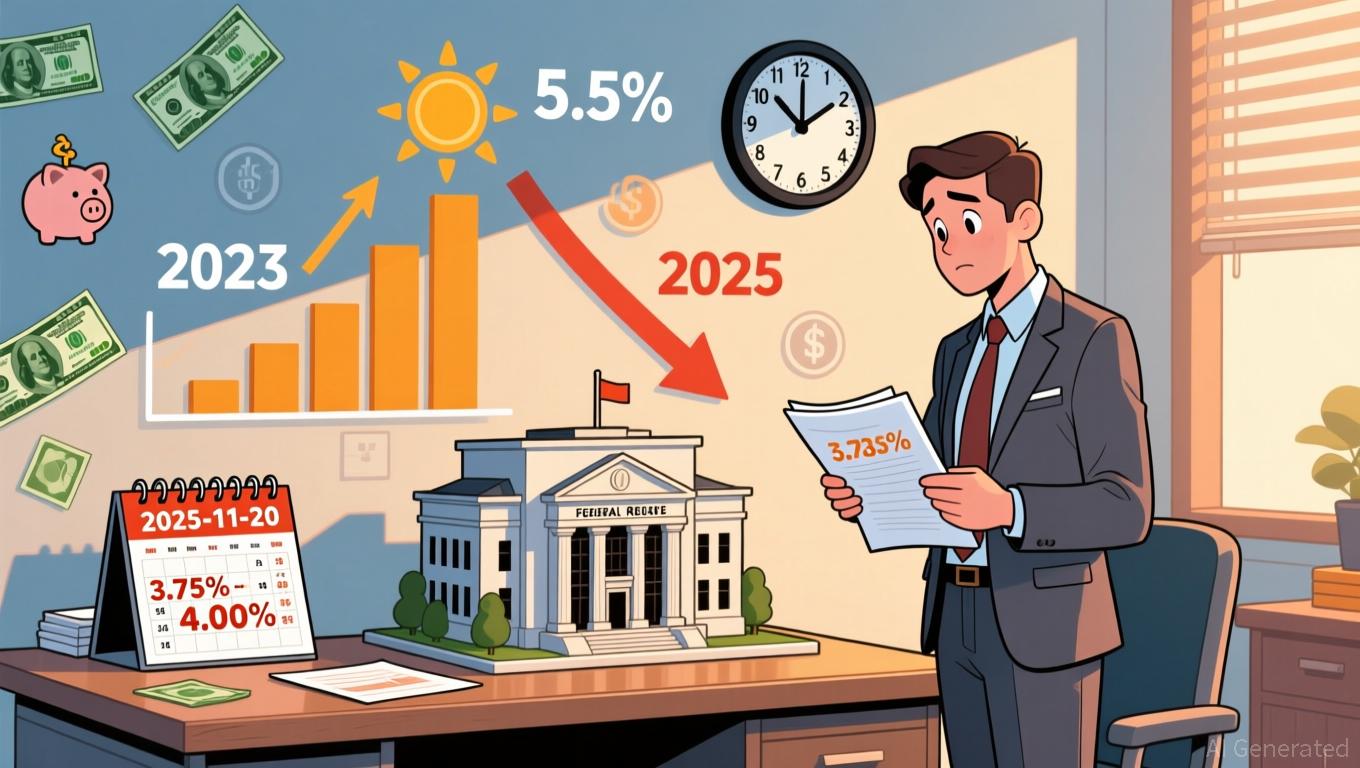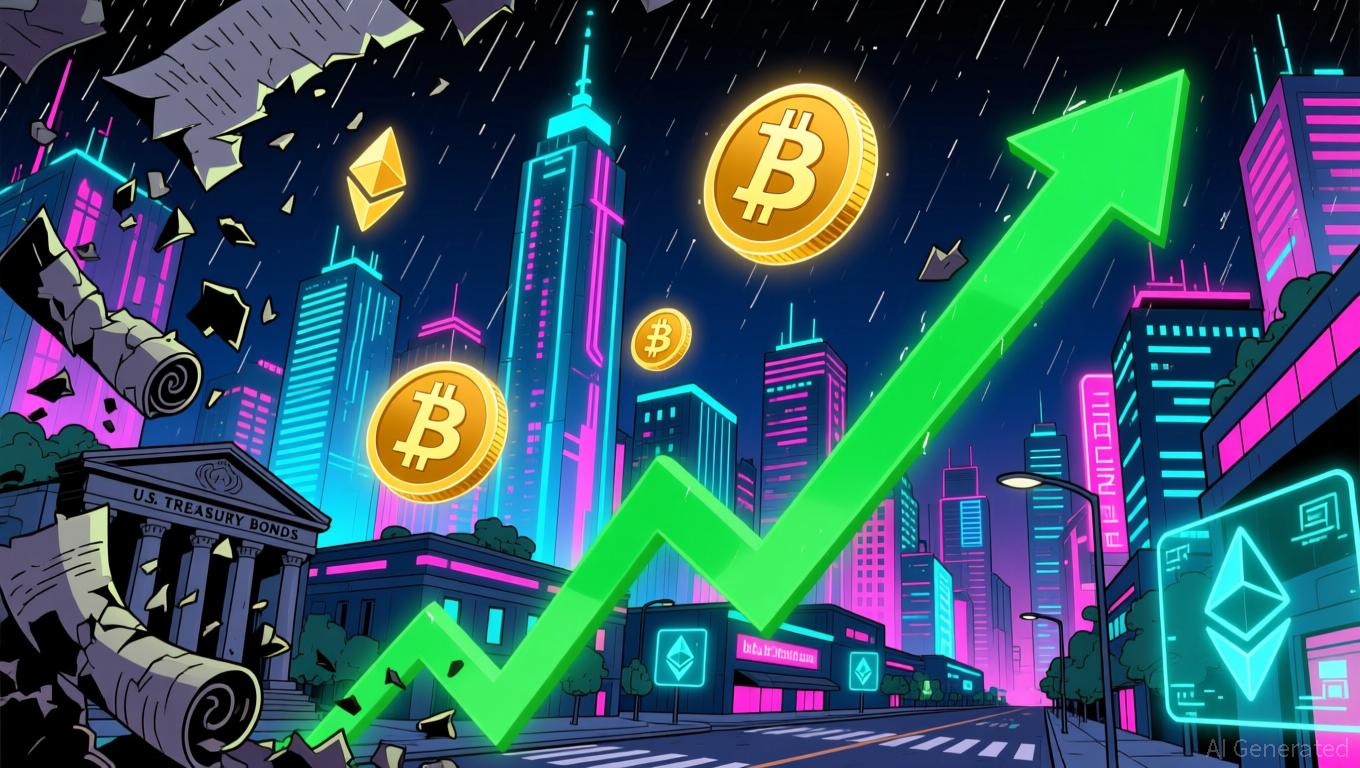Fed Faces Balancing Act Between Inflation and Employment Amid Political and Market Scrutiny
- Fed officials remain divided on a December rate cut amid conflicting inflation and labor market signals. - Boston Fed's Collins opposes cuts, citing persistent inflation risks despite recent 119,000 jobs gain and 4.4% unemployment. - Trump's tariff-driven policies face criticism for sustaining high prices, mirroring Biden's inflation challenges. - Crypto sector shows resilience with $4.6B Q3 VC funding, as regulators push for digital asset tax clarity under Trump . - Fed's December decision will balance
Federal Reserve policymakers are split on whether to lower interest rates in December, as mixed economic indicators fuel ongoing debate. Boston Fed President Susan Collins, who has consistently urged caution, stated again on Friday that she "remains inclined to oppose" reducing the federal funds rate from its current 3.75%-4% band,
Recent employment figures have further complicated the outlook. The September jobs report, released earlier this month, revealed a modest increase of 119,000 nonfarm jobs, while unemployment ticked up to 4.4%—suggesting the labor market is losing steam
The political environment adds another layer of complexity for the Fed. President Donald Trump is facing increased criticism over his administration’s economic strategies, which have not yet succeeded in bringing down persistently high consumer prices. Despite promises to tackle inflation, Trump’s tariff policies have kept products like beef, coffee, and hardware

Market responses have been varied. While the anticipation of rate reductions often lifts risk assets, some industries have moved against the trend. DexCom Inc., a company specializing in diabetes technology, saw its stock climb 3.9% after New York Fed President John Williams suggested possible easing, even as the firm faces a separate class-action suit
In the digital asset sector, regulatory issues are becoming increasingly urgent. More than 65 crypto organizations, including the
As the December meeting draws near, the Fed’s choice will depend on whether it decides to prioritize fighting inflation or supporting the job market—a dilemma that has shaped its decisions for years. With markets preparing for potential turbulence and political stakes rising, the central bank’s next steps could define the economic landscape for the coming year.
Disclaimer: The content of this article solely reflects the author's opinion and does not represent the platform in any capacity. This article is not intended to serve as a reference for making investment decisions.
You may also like
Post-peak CD returns threatened by Fed reductions—investors hurry to lock in rates
- CD rates peaked at 4.20% APY in late 2025 but declined as Fed rate cuts reduced federal funds to 3.75%-4.00%. - Short-term 12-month CDs remain competitive at 3.92% APY, outperforming longer-term products amid expected further Fed cuts. - Analysts urge investors to lock in current rates before December's anticipated third cut, as 2025's three reductions follow 2024's three cuts. - Strategic allocation to high-APY CDs maximizes returns, with $100k in 12-month terms generating $3920 vs. $3600 in 24-month te

Bitcoin News Update: Federal Reserve's Shift to Dovish Stance Sparks Digital Asset Rally Amid Supply Constraints, BTCM's Second Phase Poised to Capitalize
- Fed ends quantitative tightening, boosting markets as Bitcoin Munari (BTCM) enters $0.22 Phase 2 presale. - Dovish pivot with inflation below 2% drives risk-on sentiment, pushing December rate cut odds above 70%. - BTCM's fixed-supply model (21M tokens) and 2,627% projected return align with scarcity-driven crypto trends. - Structured presale pricing ($0.10→$0.22) and Solana's $58M daily ETF inflows highlight institutional adoption.

Bitcoin News Update: Report Reveals Bitcoin’s Future Depends on Macroeconomic Transparency and Trust from Institutions
- Bitcoin's 36% October drop sparks debate over recovery potential amid institutional sell-offs and ETF divestment risks. - Institutional holders (1,000+ BTC) reduced exposure by 1.5%, contrasting retail exits, mirroring 2019-2020 redistribution patterns. - Key support at $89,400-$82,400 and Fed rate cut odds (69.3%) highlight macroeconomic influence on Bitcoin's risk-on/risk-off dynamics. - Whale accumulation (100-10,000 BTC) contrasts retail selling, but 1,000-10,000 BTC cohort distribution remains a bea

The Growing Interest in Socially Responsible Investing (SRI) within Legal and Public Interest Fields
- SRI is shifting toward education and legal sectors to address systemic inequities, merging financial returns with social impact. - UC Berkeley's Public Interest Scholars Program funds law students for public service, ensuring measurable societal benefits through accountability frameworks. - Digital tools and ETFs like ESGU/VFTAX enhance SRI transparency, enabling investors to track real-time social impact in education and legal equity initiatives. - Institutional commitments to IDEAA principles and partn
